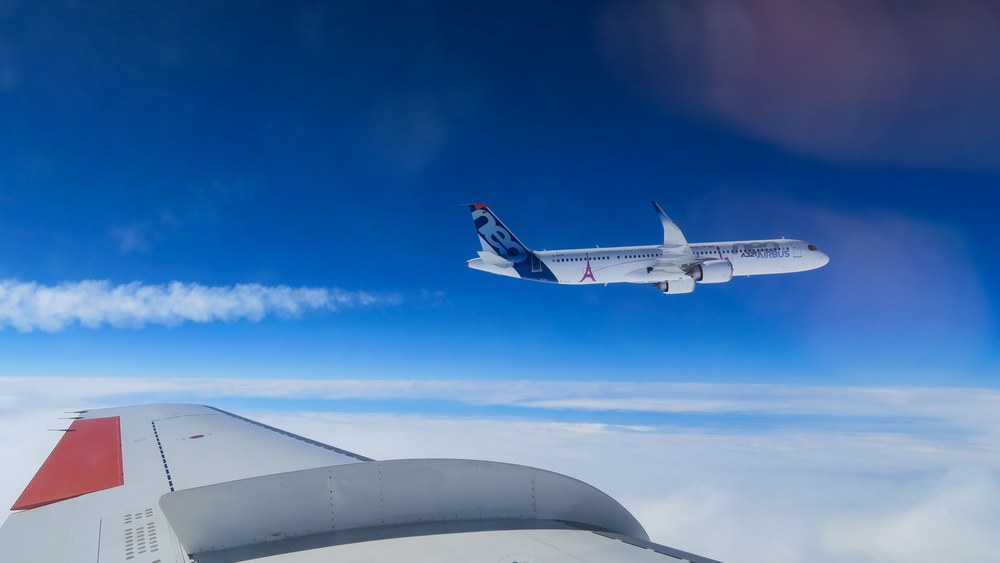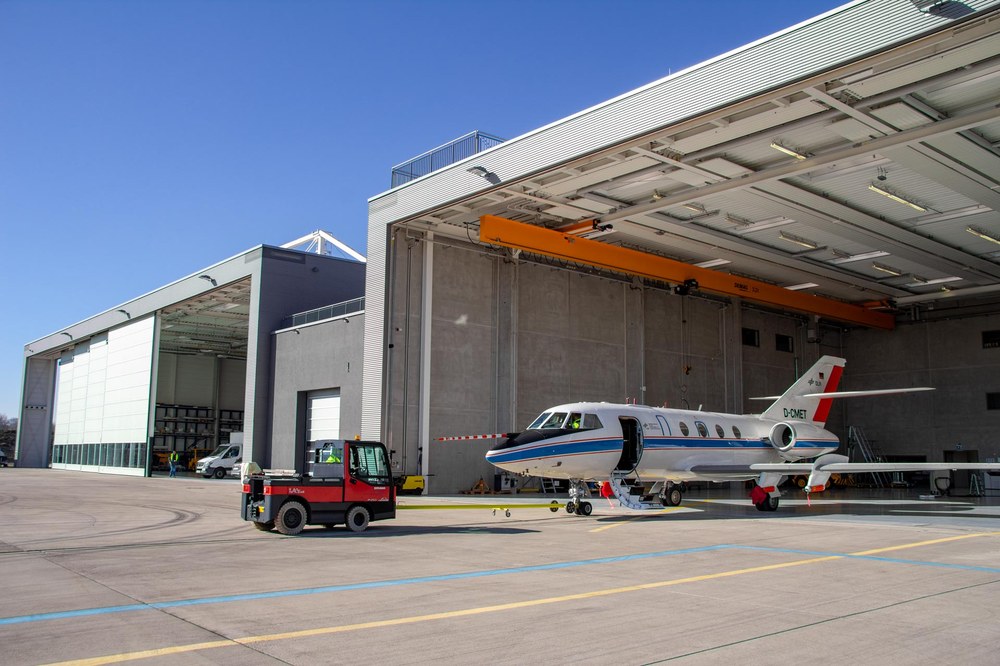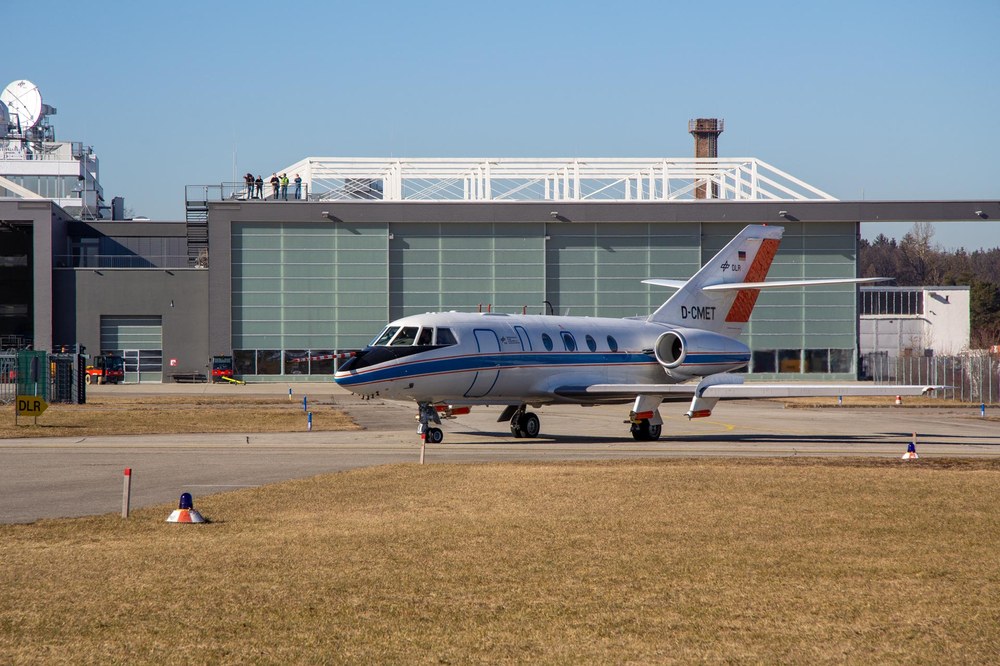Emissions and contrail study with 100 percent sustainable aviation fuel



- DLR and Airbus are conducting new flight tests with Sustainable Aviation Fuels (SAF).
- DLR's Falcon 20E will be measuring emissions from an Airbus A321neo flying ahead of it, as well as contrail formation.
- Focus: Aeronautics, air transport climate-friendly flight, sustainable fuels
Sustainable aviation fuels (SAFs) significantly reduce the climate impact of aviation in terms of both its carbon footprint and other climate impact not related to carbon dioxide. In the future, the targeted use of SAFs in contrail regions can help to rapidly reduce the climate impact of air transport. Flight tests using aircraft powered by 100 percent SAF are to take place again in order to prepare for this transition. In the 'VOL avec Carburants Alternatifs Nouveaux' (VOLCAN) and the DLR Neofuels project, an Airbus A321neo will use pure SAF in both engines for the first time. The Falcon 20E research aircraft from the German Aerospace Center (Deutsches Zentrum für Luft- und Raumfahrt; DLR) will chase the A321neo and researchers will analyse the emissions and ice crystals in the aircraft's exhaust plumes. Safran, Dassault Aviation and ONERA are also participating in the project. The research flights will take place from the end of February to the end of March 2023 in specially reserved airspaces off the coast of France.

Video: VOLCAN project (German)
Your consent to the storage of data ('cookies') is required for the playback of this video on Quickchannel.com. You can view and change your current data storage settings at any time under privacy.
A question of condensation
The Airbus A321neo is a modern commercial aircraft equipped with lean-burn engines that enable it to burn kerosene while producing very little soot. "We are particularly interested in how ice crystals form when several orders of magnitude less soot is emitted by the CFM LEAP-1A engines in lean-burn mode," explains DLR Project Leader Christiane Voigt of the DLR Institute of Atmospheric Physics. "To do this, we will use the Falcon to conduct emission measurements both in the near field, approximately 100 metres behind the A321neo, as well as in the contrails in the far field at distances of several kilometres."
The researchers are planning approximately 15 joint flights, during which the Falcon 20E will follow the A321neo. Different variants of the sustainable fuel 'Hydro-processed Esters and Fatty Acids' (HEFA) will be tested under various modes of engine operation. HEFA is produced from paraffinic hydrocarbons, which are generally derived from used cooking oil and other waste fats, and is free of cyclic hydrocarbons (aromatics) and sulphur. Pure SAFs with no aromatics have several advantages, such as the reduced generation of soot particles during combustion. This can also lead to a reduction in ice crystals that form on the soot. Reducing ice crystals and contrail formation can significantly reduce climate effects, as DLR has demonstrated together with NASA.
Flight test research stages
DLR conducted extensive flight tests to characterise the emissions of synthetic fuels as early as 2015 with the ECLIF1 campaign. These flight tests were continued in 2018 with the ECLIF2 campaign in collaboration with NASA. During the ECLIF3 campaign 2021 the first emission measurements were conducted during flight tests using 100 percent SAFs on an A350, in collaboration with Airbus and Rolls-Royce.
The first test flights of the VOLCAN project with the use of SAFs from the manufacturer Total Energies in one engine took place in 2021. The emission measurements in the VOLCAN project are complemented by ground measurements in which the DLR Institute of Combustion Technology in Stuttgart is participating. The Falcon 20E research aircraft is operated by DLR's Flight Experiments facility in Oberpfaffenhofen. The aim of the new experiments is to measure the emissions of lean-burn combustion and to investigate resulting contrail formation. One question is whether other particles also lead to the formation of contrails when soot emissions from lean-burn combustion have already been reduced by orders of magnitude.
The goal – climate-compatible air transport
The goal is to achieve a climate-neutral economy and society by the middle of this century. The European Green Deal requires a comprehensive commitment to research and development in air transport. To this end, DLR has developed an aviation strategy that maps out the research path to achieve climate-neutral flight. The goal is highly efficient, climate-friendly aircraft that utilise various new propulsion concepts and sustainable fuels according to their flight range and size. DLR's whole-system research expertise enables it to adopt the role of virtual manufacturer (virtual OEM) and facilitate an accelerated energy transition in the air transport sector. New technologies and fuels, as well as climate-friendly flight management, are intended to further reduce emissions of carbon dioxide, nitrogen oxides and particles by air transport and decouple them from the predicted growth. SAFs, in combination with highly efficient turbofan engines, will play a key role here, particularly for long and medium-haul flights.
